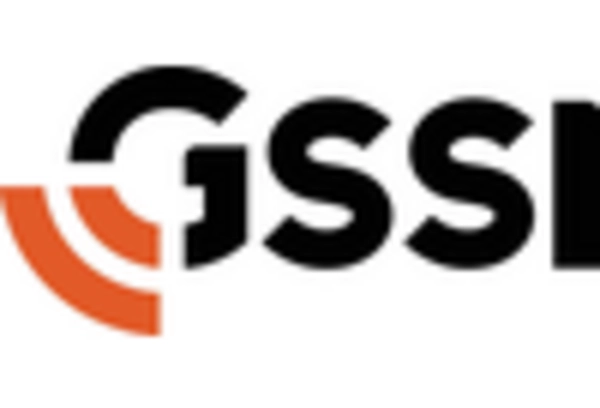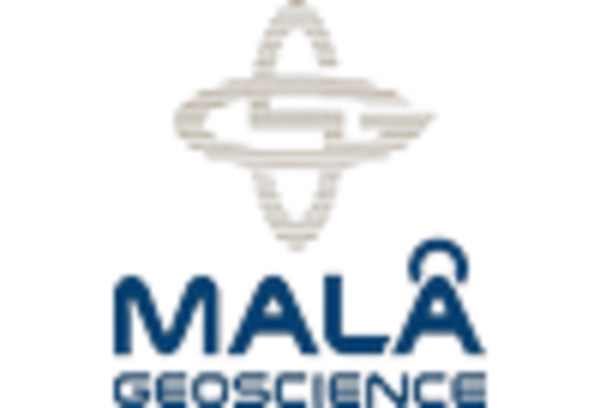Advancements in GPR Technology
Technological advancements are playing a crucial role in shaping the ground penetrating-radar market. Innovations such as improved signal processing algorithms and enhanced antenna designs are making GPR systems more efficient and user-friendly. These advancements are likely to increase the accuracy and depth of subsurface imaging, which is essential for various applications, including civil engineering and archaeology. The market is projected to grow by approximately 7% as these technologies become more accessible to a wider range of users. Additionally, the integration of GPR with other technologies, such as GIS and 3D modeling, is enhancing its applicability. This convergence of technologies indicates a promising future for the ground penetrating-radar market, as it becomes an integral part of modern surveying and mapping practices.
Growing Environmental Concerns
Environmental concerns are increasingly influencing the ground penetrating-radar market. As the need for sustainable practices rises, industries are turning to GPR for non-invasive subsurface investigations. This technology minimizes environmental disruption, making it a preferred choice for projects that require ecological sensitivity. In the US, regulatory bodies are emphasizing the importance of environmental assessments, which often necessitate the use of ground penetrating radar. The market is likely to see a growth rate of around 6% as organizations prioritize eco-friendly methods. Furthermore, GPR can assist in identifying contamination in soil and groundwater, aligning with the broader goals of environmental protection. This trend suggests that the ground penetrating-radar market will continue to expand as more sectors recognize the benefits of integrating GPR into their environmental strategies.
Increasing Infrastructure Development
The ground penetrating-radar market is experiencing a surge due to the increasing infrastructure development across the United States. As urban areas expand and require more complex subsurface analysis, the demand for ground penetrating radar technology is likely to rise. This technology aids in the detection of utilities, archaeological sites, and geological features, which is essential for construction projects. In 2025, the infrastructure sector is projected to grow by approximately 5% annually, further driving the need for advanced subsurface imaging solutions. The ground penetrating-radar market is thus positioned to benefit from this trend, as construction firms seek reliable methods to avoid costly delays and ensure safety during excavation. The integration of GPR technology into standard practices is becoming more prevalent, indicating a shift towards more sophisticated construction methodologies.
Rising Demand in Archaeology and Forensics
The ground penetrating-radar market is witnessing a rising demand in the fields of archaeology and forensics. As researchers and law enforcement agencies seek non-invasive methods to explore subsurface features, GPR has emerged as a valuable tool. In archaeology, it allows for the mapping of historical sites without disturbing the ground, preserving cultural heritage. In forensics, GPR aids in locating buried evidence or remains, which is crucial for investigations. The market is expected to grow by about 4% as these sectors increasingly adopt GPR technology. This trend highlights the versatility of ground penetrating radar, as it serves both scientific inquiry and public safety. The continued investment in research and development within these fields is likely to further enhance the capabilities of GPR, solidifying its role in both archaeology and forensic science.
Increased Investment in Research and Development
Investment in research and development is a key driver for the ground penetrating-radar market. As industries recognize the potential of GPR technology, funding for innovative applications and improvements is on the rise. This trend is particularly evident in sectors such as construction, environmental monitoring, and archaeology, where advanced GPR systems are being developed to meet specific needs. The market is projected to expand by approximately 5% as new applications emerge from these investments. Furthermore, collaborations between academic institutions and private companies are fostering innovation, leading to the development of more sophisticated GPR solutions. This focus on R&D indicates a robust future for the ground penetrating-radar market, as continuous advancements are likely to enhance its effectiveness and broaden its application scope.
















Leave a Comment